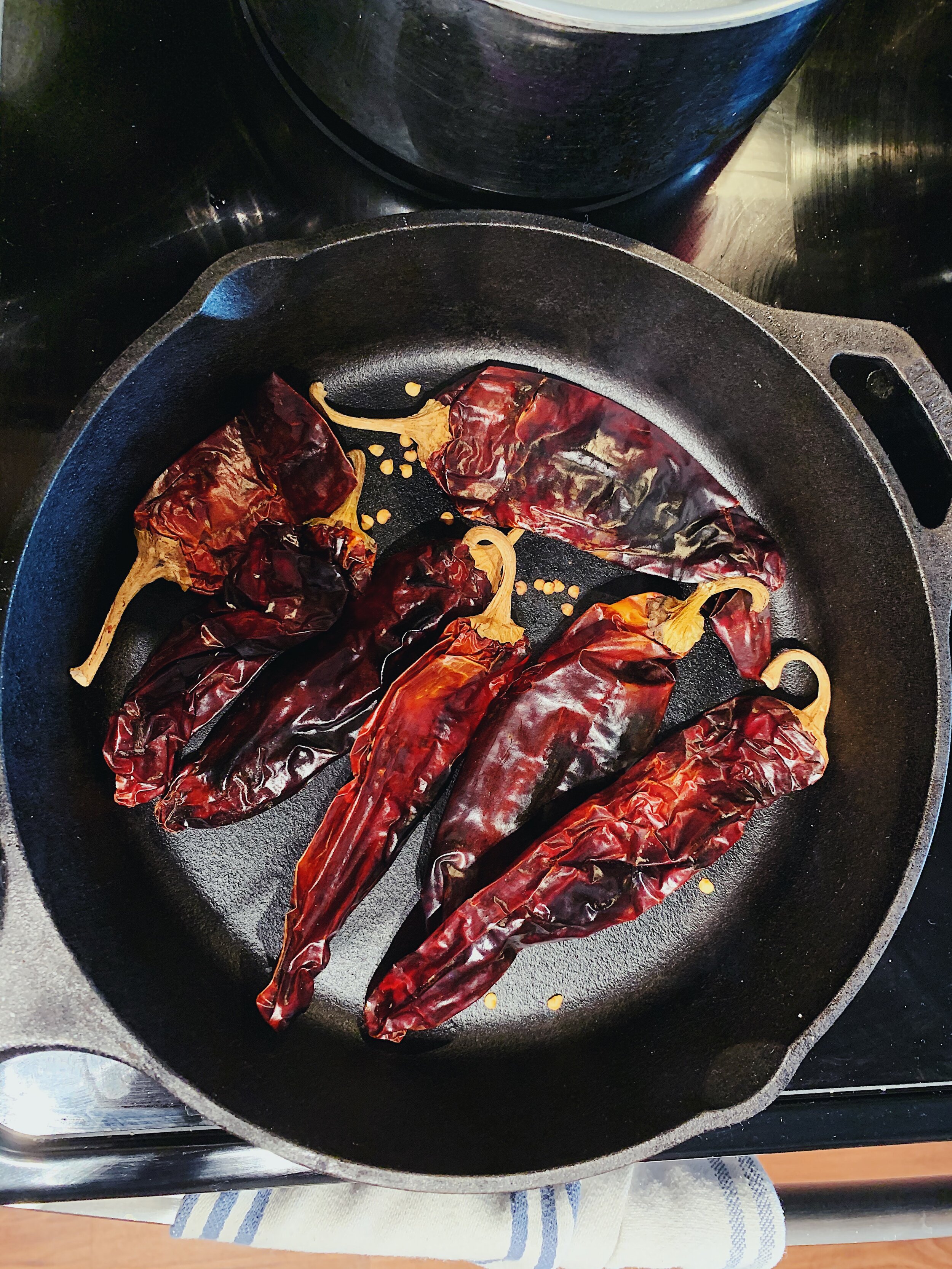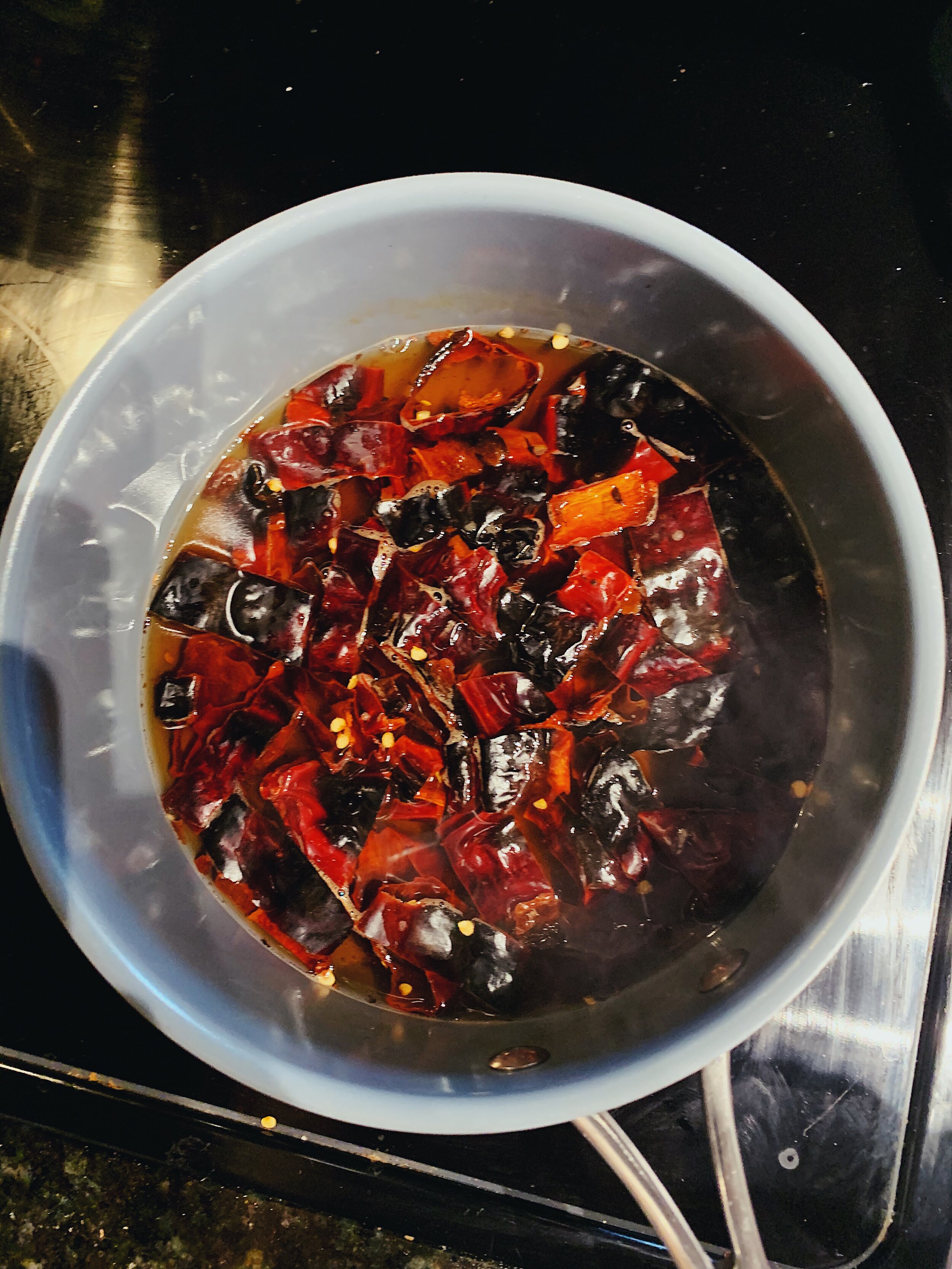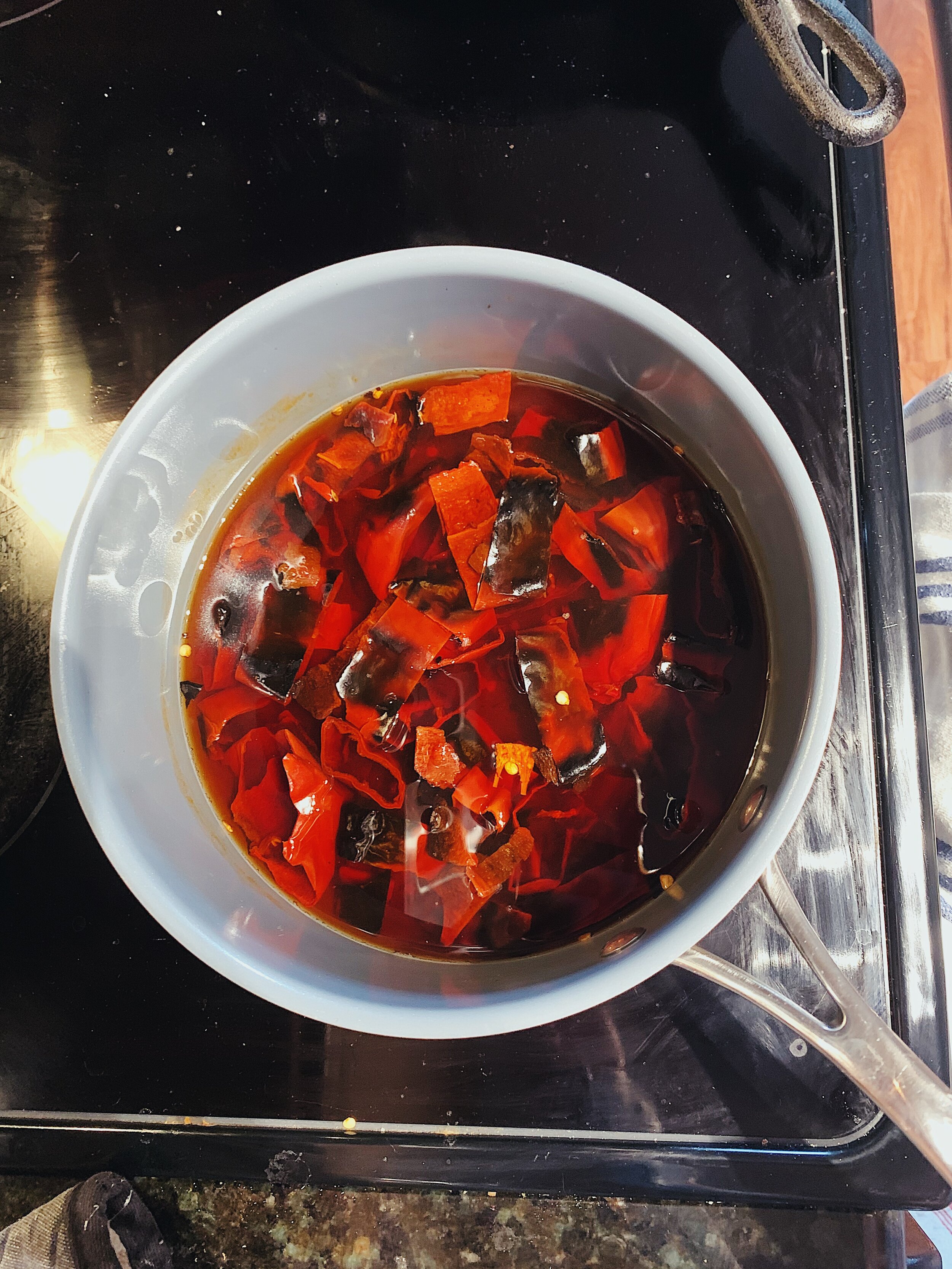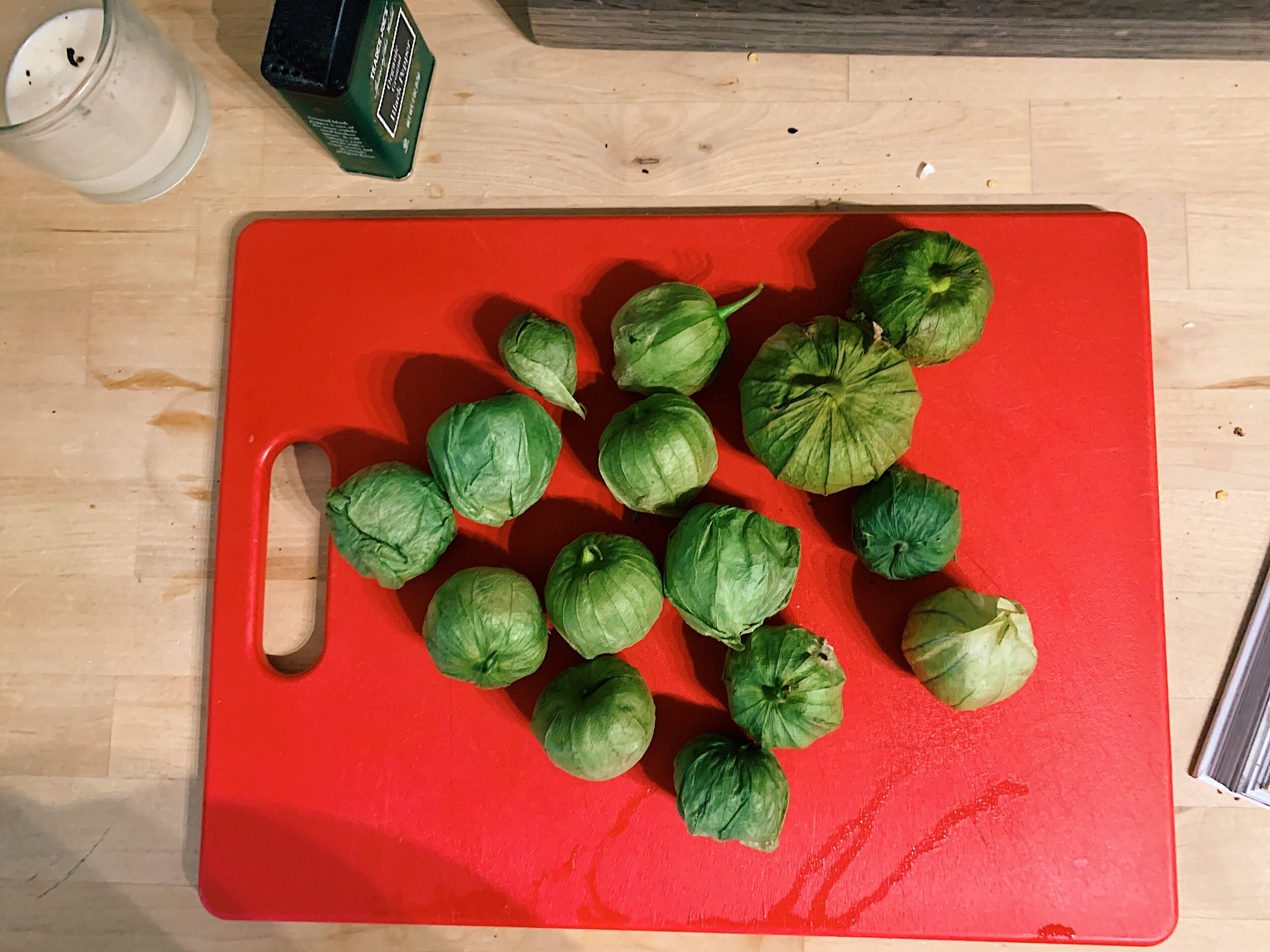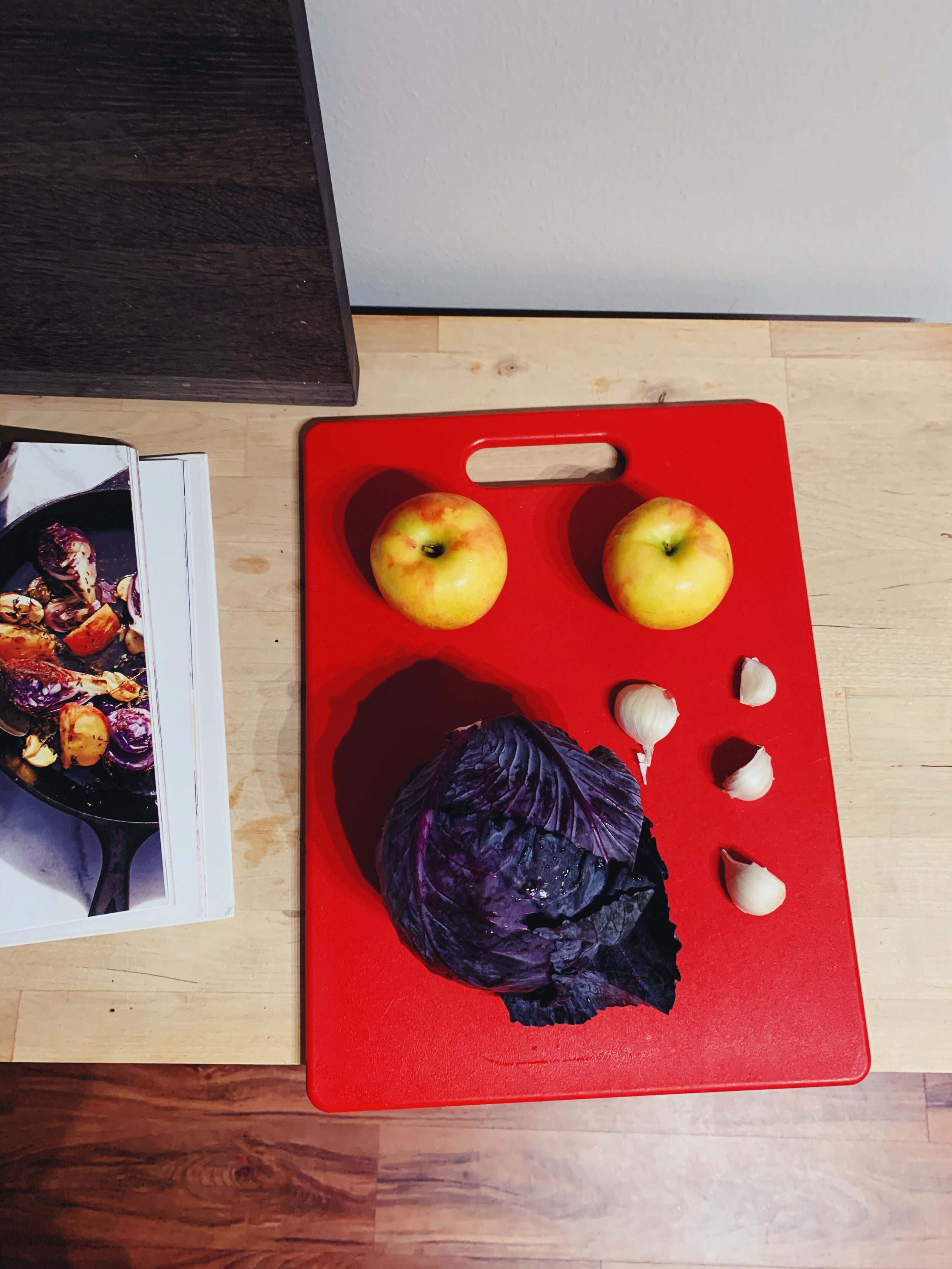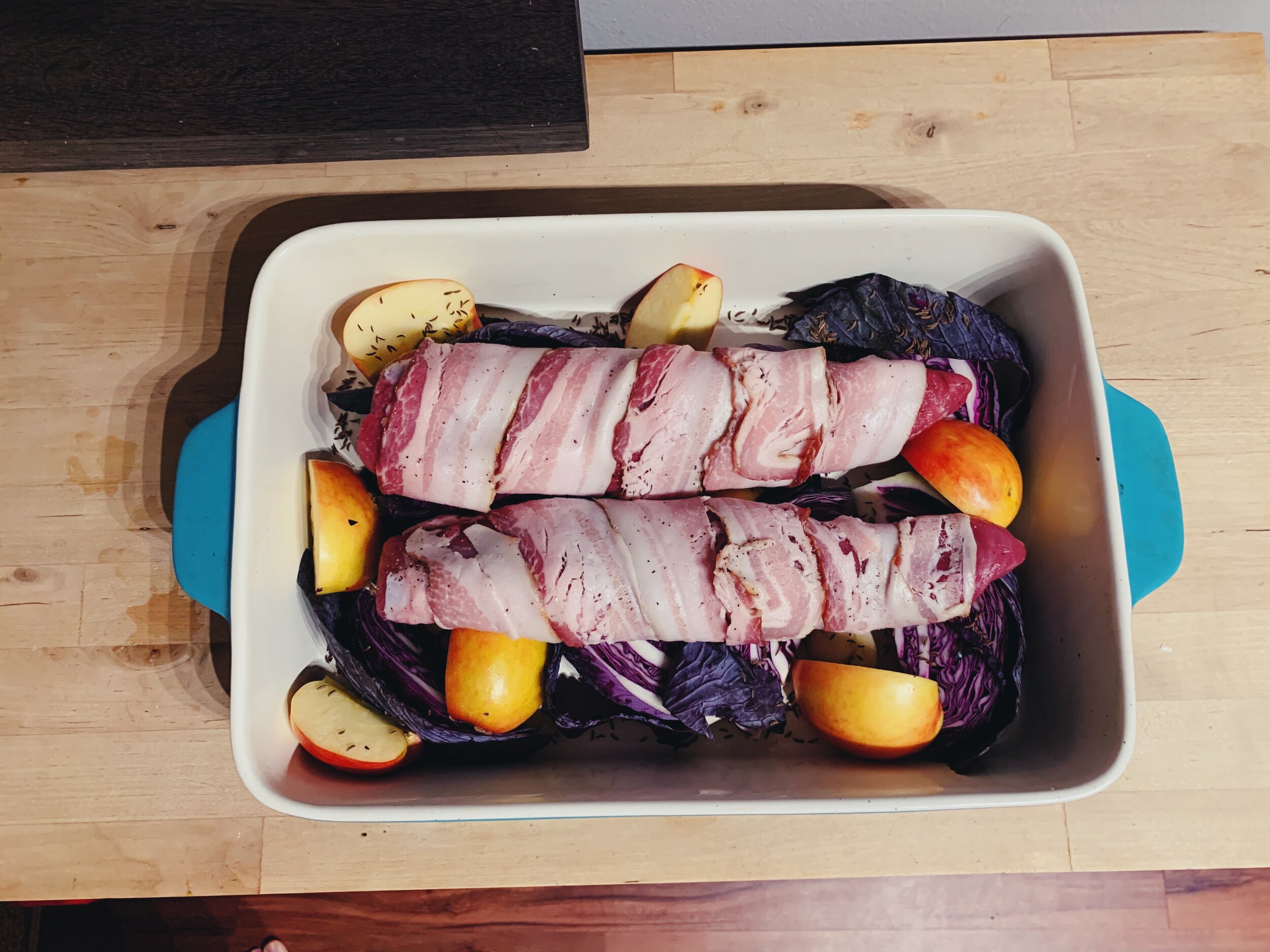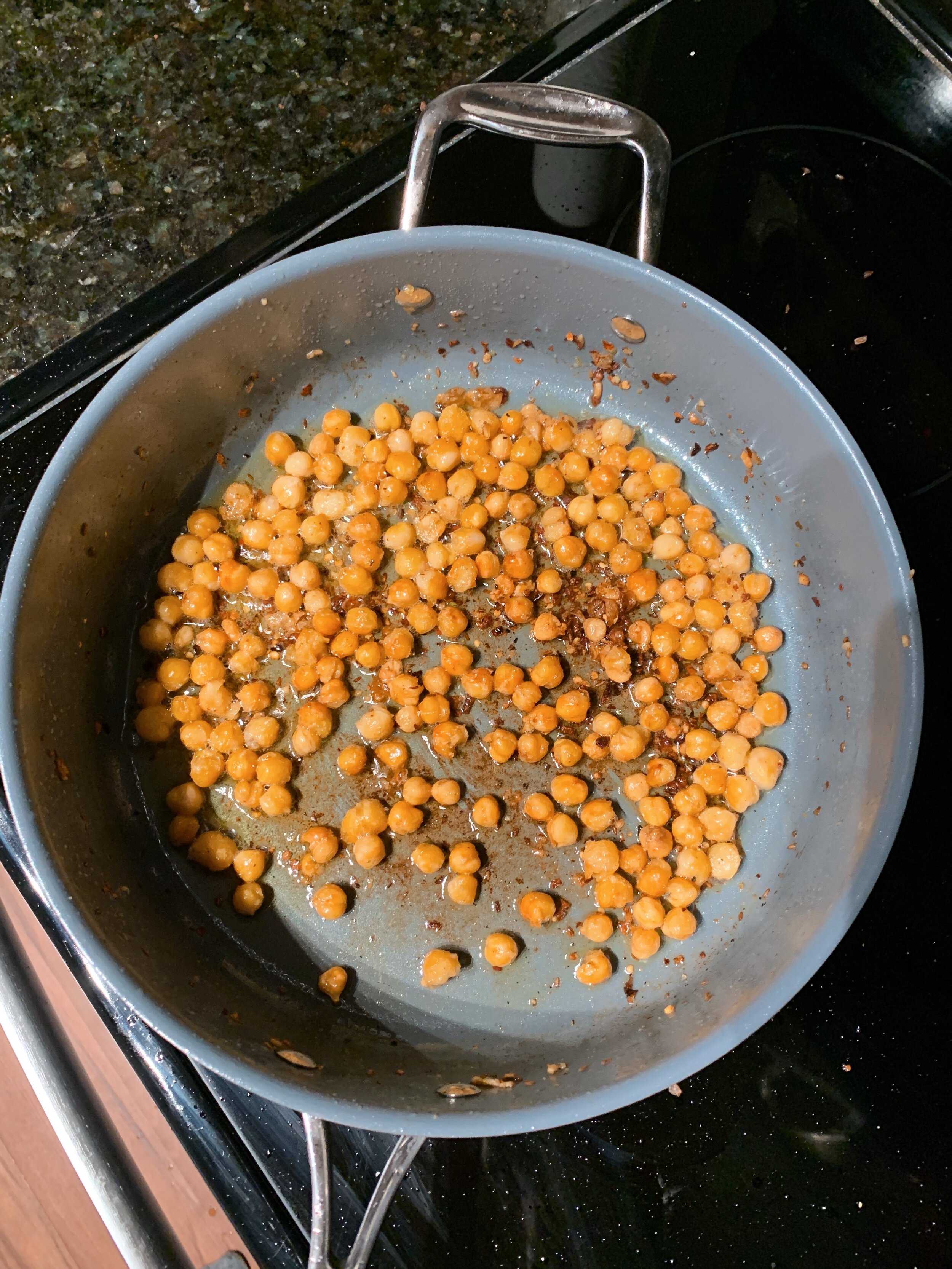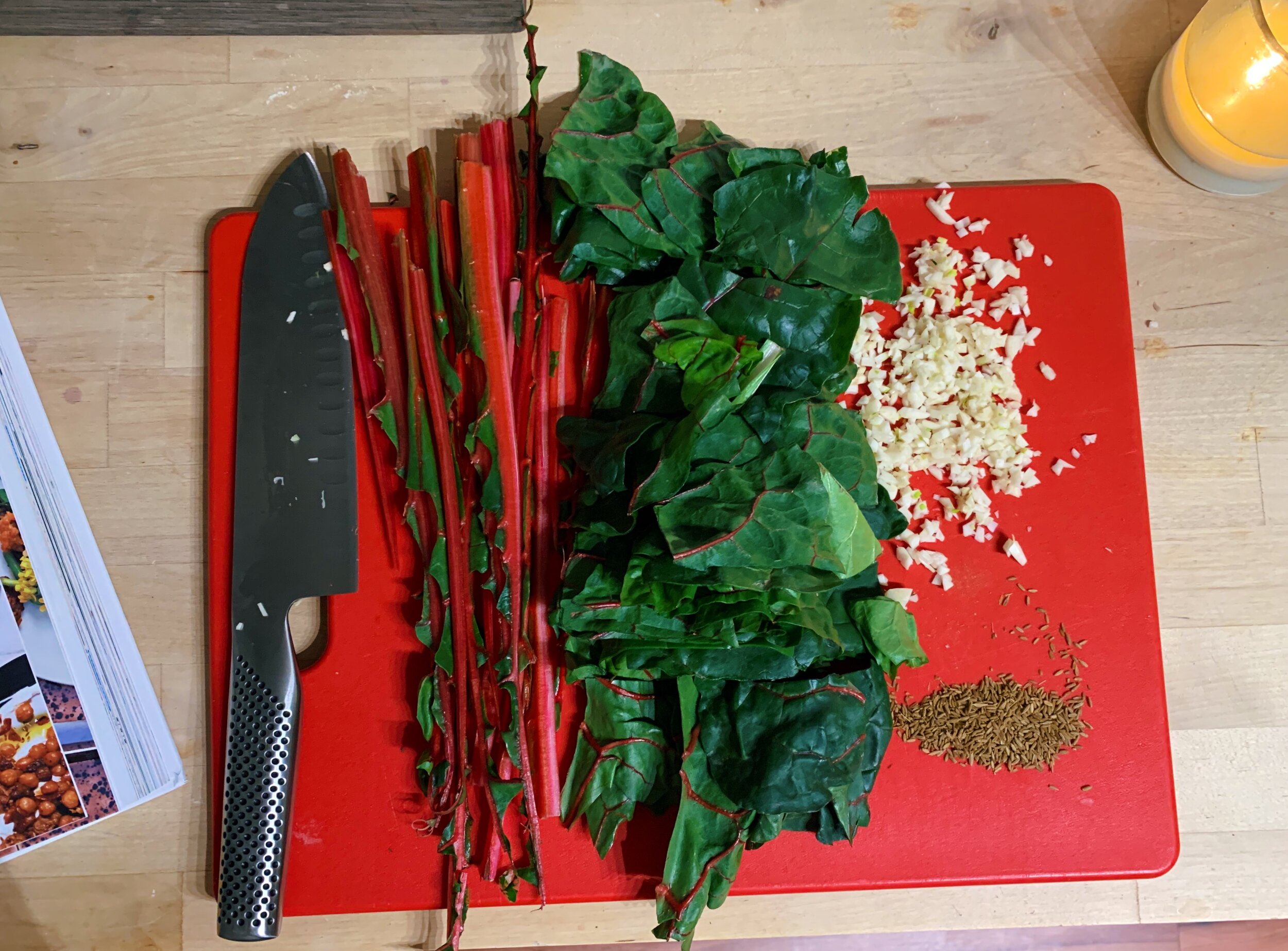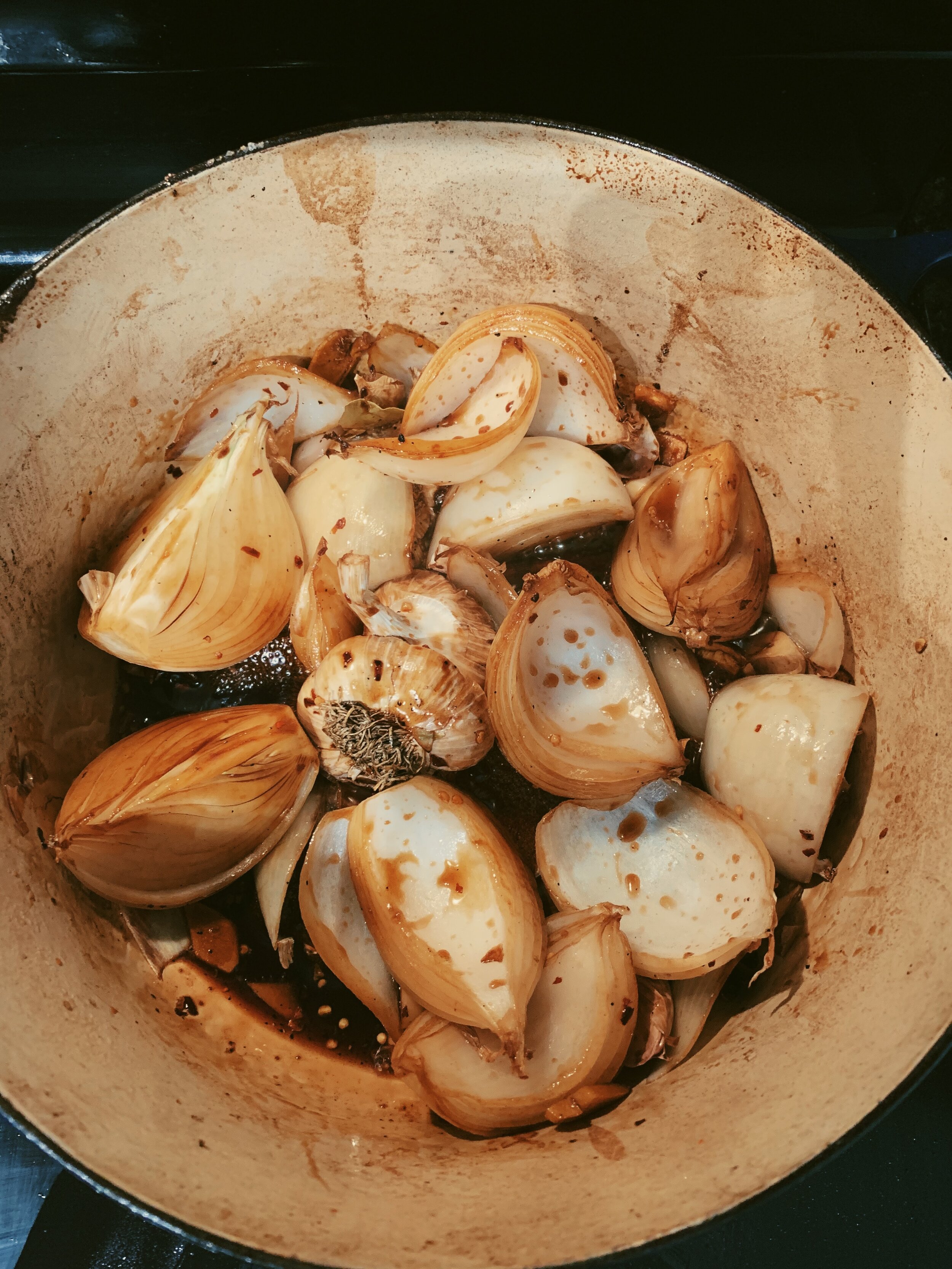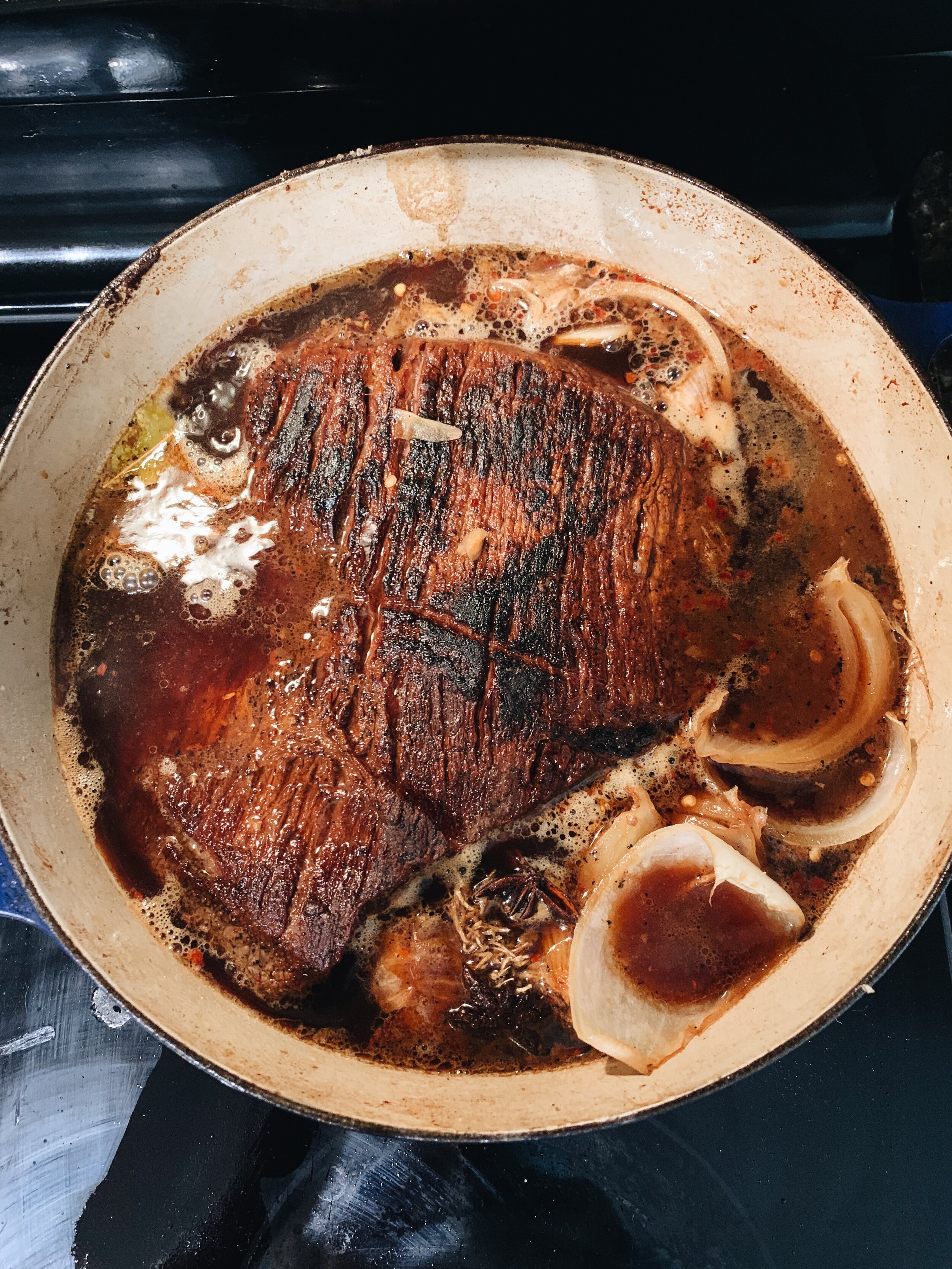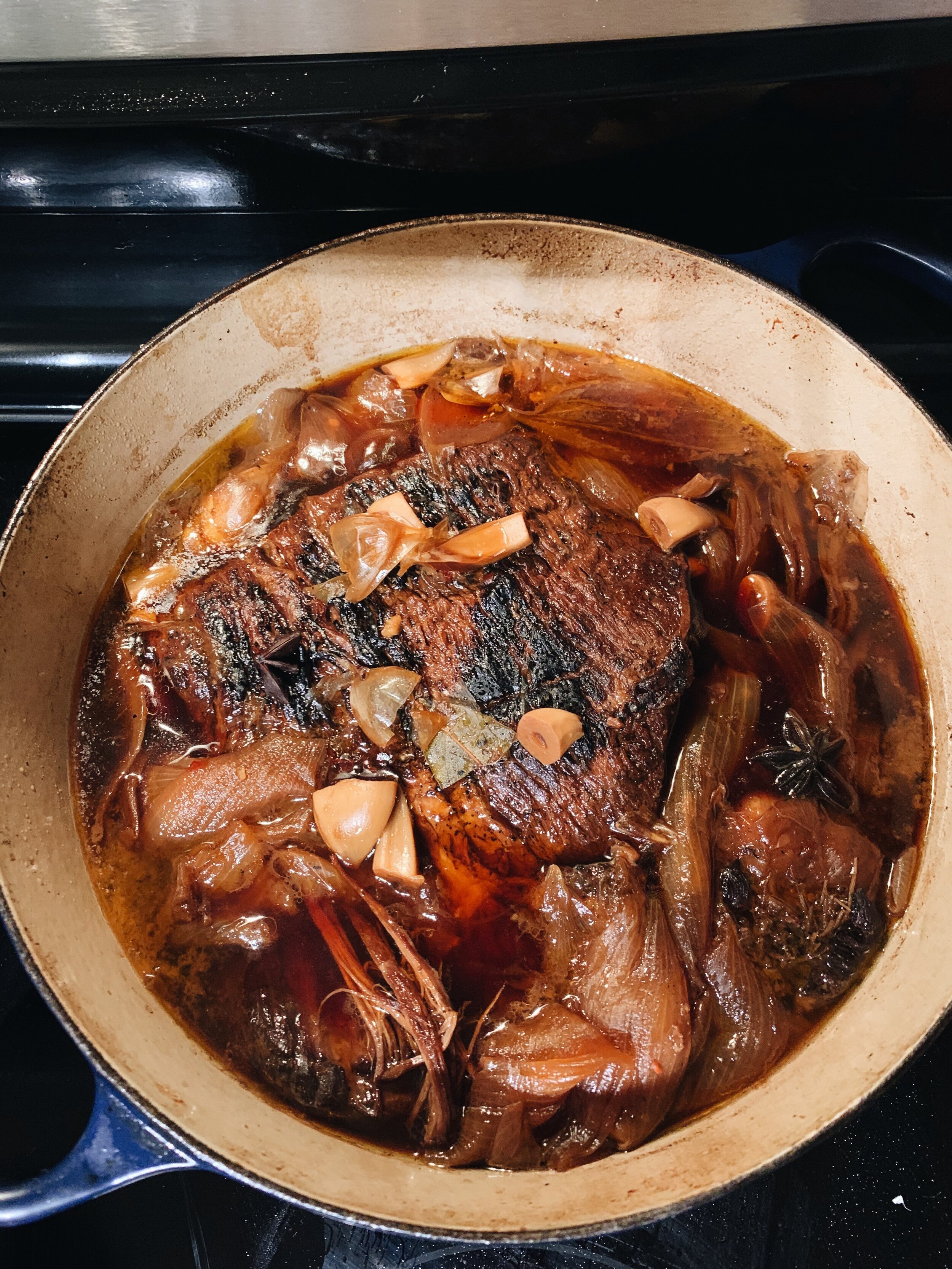I like seafood. I never crave it. Some seafood is more appealing to me: salmon, calamari, mahi mahi. Other seafood makes me squirmy: clams, mussels, sardines. I’ve made salmon and shrimp before, but nothing else.
Of course, there are a total of 30 seafood recipes between Alison’s two cookbooks, and this project will force me to cook all the seafood out there (including a whole branzino)! I had to start somewhere, right? Why not make it halibut.
In the Midwest, halibut is not readily available in a regular grocery store, but I was able to track some down at Whole Foods. Halibut is also a bit pricey here, so I chose to cut this recipe in half and just make two filets (not four).
Halibut is a thicker, mild white fish. Its meaty flesh is very impressionable. It easily absorbs the flavors it’s next to. In this recipe, soy sauce is the leader of the flavor pack. The fish is brined in it, along with a bit of rice vinegar and water, for 1-2 hours before showtime. This brine is primarily motivated by flavor, not so much for maintaining moisture like a turkey brine.
If cooking fish were always this fast and easy, then I would have no reason to be so intimidated. Cooking this halibut was as simple as placing the fish in a saute pan in a pool of soy sauce, sesame oil and water over a light simmer. Cover the pan and let it cook through for 7 minutes. The steam cooks the fish through without drying it out, and creates a nice steaming liquid to braise the mustard greens. Mustard greens were a fun, tangy pairing for this somewhat bland fish. And a good amount of fresh lime juice and toasted sesame seeds brought it all together.
I followed Alison’s suggestion and served this with Crispy Potatoes with Onions and Parsley. But I think this could just as easily go over a bowl of coconut rice.
I didn’t expect to like this dish as much as I did. I’m looking forward to trying it in the summer, eating it on our deck with a glass of chilled white wine in hand.
21 recipes cooked, 204 to go.



